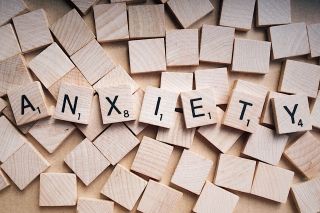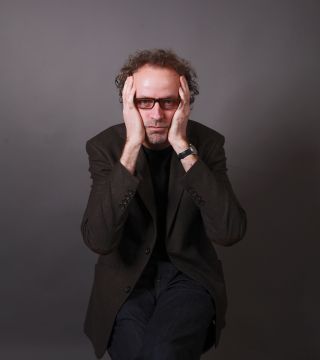Anxiety
Is Universal Anxiety Screening a Good Idea?
Explore why anxiety symptoms may be increasing and who needs screening.
Posted March 20, 2024 Reviewed by Hara Estroff Marano
Key points
- In the last 50 years, both incidence and prevalence of anxiety have increased among all ages.
- Youth have heightened anxiety due to their developmental age. Self-esteem and self-confidence are lower.
- Social media use in youth increases anxiety due to fear of missing out if not posting enough online.
Recently the U.S. Preventive Services Task Force recommended anxiety screening for people ages 8 to 65 years. Is this a helpful recommendation or not?

Anxiety disorders are the most prevalent psychiatric diagnosis. Anxiety can be a disabling condition. Treatment is commonly by medications such as SSRIs. Talk therapies are helpful, but not frequently prescribed. Psychodynamic and CBT therapies can be used along with hypnosis, techniques for relaxation and guided imagery.
Drawbacks to Screening
If we screen more for anxiety disorders and find them, then we must treat more people. Can we do this? What treatments can we offer via the already-overburdened mental health care system?
Psychiatrist Robert T. London sees several drawbacks to and voices concerns about universal anxiety screening. One is the exclusion of those over 65 years of age; the task force cited a “lack of data” regarding this cohort. London points out that the older age group has many worries, including those associated with aging itself––health problems, retirement, deaths of friends and relatives, and financial concerns.
London also points out that most anxiety screening is and will continue to be done by primary care physicians. They do quick, few-minute evaluations and prescribe medications. No in-depth mental health evaluation is possible with such time constraints.
Most anxiety screening is not done by psychiatrists or psychologists. Such specialists are not readily available in sufficient numbers for necessary in-depth diagnosis and treatment planning beyond medications given by PCPs.
Two Aspects of Increased Anxiety
To better understand the prevalence of anxiety we need to look at two questions: whether anxiety disorders have increased in the last 50-100 years and/or whether people’s ability to cope has diminished, or whether both have occurred.
If anxiety has increased, what is the reason? Better diagnostic tools and acumen? Decreased ability to cope with life’s ups and downs? Something else?
Incidence and Prevalence
A.J. Baxter, et al. (2012) studied the prevalence of anxiety disorders in 44 countries from 1980 to 2009. The overall prevalence rate was 7.3%, with a range from 4.8% to 10.9%.
They found higher rates of anxiety in Western cultures compared to non-Western cultures. They also found higher anxiety in populations exposed to war conflict. Yet the highest prevalence of anxiety, 10.1%, was in the United States, a non-conflict country.
Anxiety increased from 2008 to 2018 among those under age 50. This was especially so among those aged 18 to 25, according to Renee Goodwin et al. (2020). This age cohort had an increased prevalence of anxiety, from 7.97% in 2008 to 14.66% in 2018.
Factors associated with the increase were low income, never married, and having only a high school diploma or not completing college. These findings may pivot around levels of social support, social isolation, loneliness, and finances. They may also pivot around young adulthood being a time of increased vulnerability to the onset of anxiety disorders.
Yang et al. analyzed data from the Global Burden of Disease Study in 2019. They looked at prevalence and incidence of anxiety in 204 countries from 1990 to 2019. They discovered that the absolute number of anxiety disorders grew by 50% from 1990 to 2019, a 30-year period. Highest rates were among those ages 5-39 years. These were attributed to bullying, either as victim, perpetrator, or both.

Anxiety incidence rates increased, peaking at ages 10-14. The rates remained high until people reached their early 40s. The rates fell in those older than 55 and increased again in those older than 75 years.
Increased Identification and Decreasing Stigma
Goodwin et al. (2020) point out that anxiety symptoms were less frequently asked about in past national surveys. Lessening influence of stigma about mental health issues may increase reporting of anxiety symptoms.
Jean Twenge et al. (2010) found that improved ways of detecting anxiety symptoms may lead to discovering higher incidence and prevalence. It appears that several factors account for increases in anxiety. Twenge et al. cite improved ways of revealing anxiety symptoms in the decades before COVID. Certainly, more sophisticated studies of both incidence and prevalence of anxiety have been done over the past 50 to 100 years.
Decreased Coping and Social Media Use
With incidence and prevalence of anxiety highest in children and youth, we must ask why. Developmentally, this young age group is quite vulnerable to anxiety symptoms and also to bullying, either as victim and/or perpetrator.
Several researchers find a link between increased anxiety and social media use among youth. Social media use on top of high developmental risk may compound the development of anxiety symptoms in younger age groups. Oberlo.com in 2023 reported the highest usage of social media by those ages 20 to 29. Fourth highest was among those ages 13 to 19.
Have coping abilities diminished? If so, does this contribute to the rise in anxiety? Independent of, and preceding, the COVID pandemic has been the rise in social media use, especially among youth. Several studies from 2019 and 2020—Barthorpe, et.al., Hollis et al., Riehm, et al. —link a drop in coping skills with increased anxiety symptoms.
The youngest users appear the most vulnerable to increased anxiety through social media use. There is a correlation between increasing anxiety symptoms and increased number of hours a day of social media use, reports Leah Shafer.
The Double Effect on Youth
There appears to exist a double whammy. Social media use increases anxiety symptoms at the age when self-esteem is low and insecurity high. Amanda Lenhart reports in a 2015 Pew Research study that teens’ anxieties rose from excessive social media communication and fear of missing out if not participating enough in posting online.
Universal anxiety screening appears to be a good idea if it extends to all age groups, especially the very young and the old. We can strive to treat all anxious people once we know the extent of their suffering with anxiety symptoms. Such knowledge may propel us to devise new avenues for both prevention and treatment.
We especially need to target youth with screening, prevention, and treatment services because of the double hit to which they are exposed—increased anxiety due to young age and to prevalent social media use.
References
Barthorpe, A. et al. (2020), Is social media screen time really associated with poor adolescent mental health? A time use diary study. J Affect Disord, 1:274:864-870.
Baxter, AJ, et al. (2012), Global prevalence of anxiety disorders: a systematic review and meta-regression. Psychological Medicine, pp.1-14.
Goodwin, RD, et al. (2020), Trends in anxiety among adults in the United States, 2008-2018: Rapid increases among young adults, J Psychiatr Res, 130: 441-446.
Hollis, C., Livingstone, S., Sonuga-Barke, E. (2020), The role of digital technology in children’s and young people’s mental health––a triple-edged sword? J Child Psychol Psychiatry, 61 (8) 837-841.
Lenhart, Amanda (9 April, 2015), Teens, social media & technology overview 2015, Pew Research Center.
London, RT, (2023), Universal anxiety screening is a very good start, Clinical Psychiatry News, pp.5-6.
Riehm, KE et al. (2019), Associations between time spent using social media and internalizing and externalizing problems among US youth. JAMA Psychiatry 76(12), 1266-1273.
Shafer, Leah, (15 December, 2017), Social media and teen anxiety, Harvard Graduate School of Education (gse.harvard.edu).
Twenge, JM et al. (2010), Birth cohort increases in psychopathology among young Americans, 1938-2007: a cross-temporal meta-analysis of the MMPI. Clinical Psychology Review, 30, 145-154.
Yang, X. et al. (2021), Global, regional and national burden of anxiety disorders from 1990 to 2019: results from the Global Burden of Disease Study 2019, Epidemiology and Psychiatric Sciences, 30, pp.1-11.




